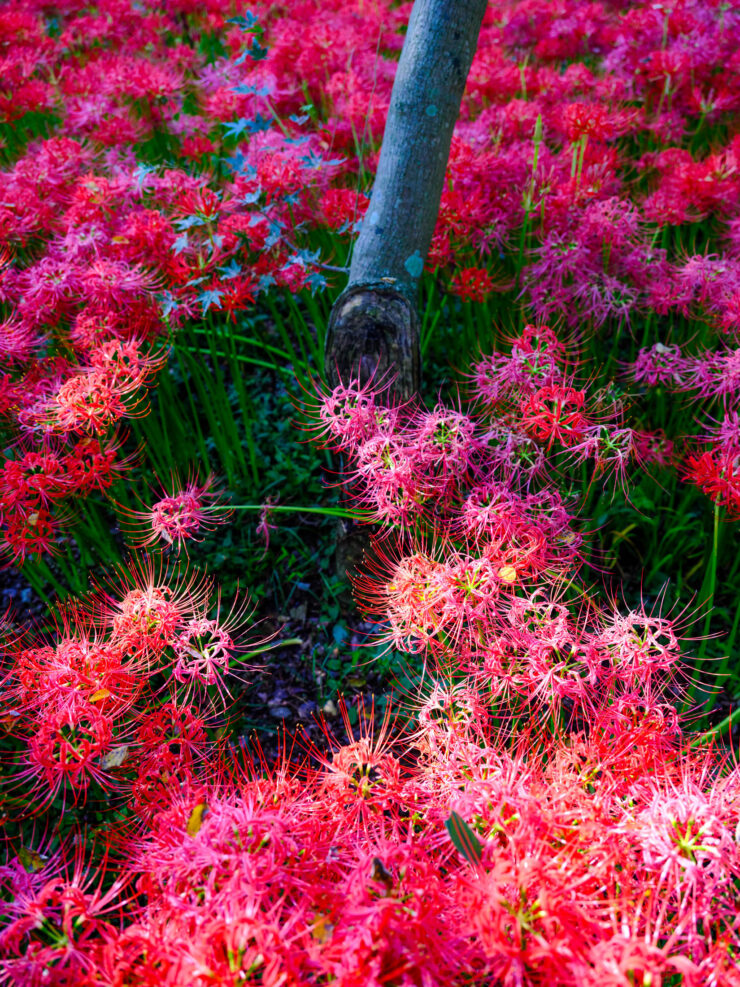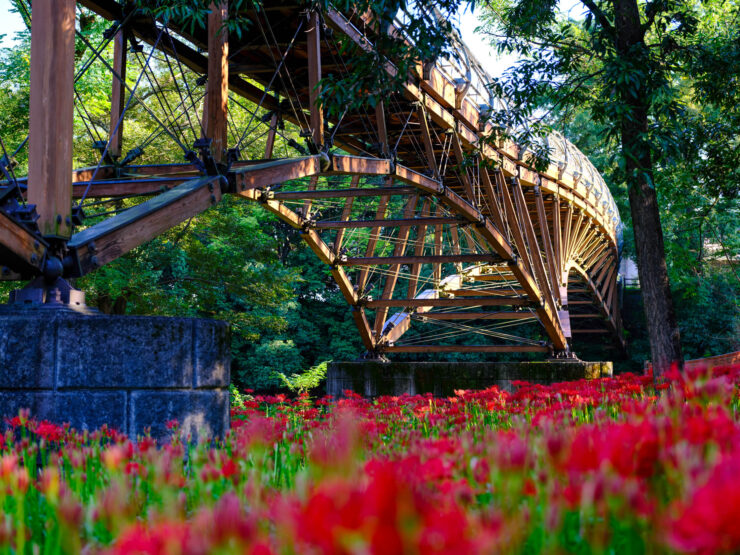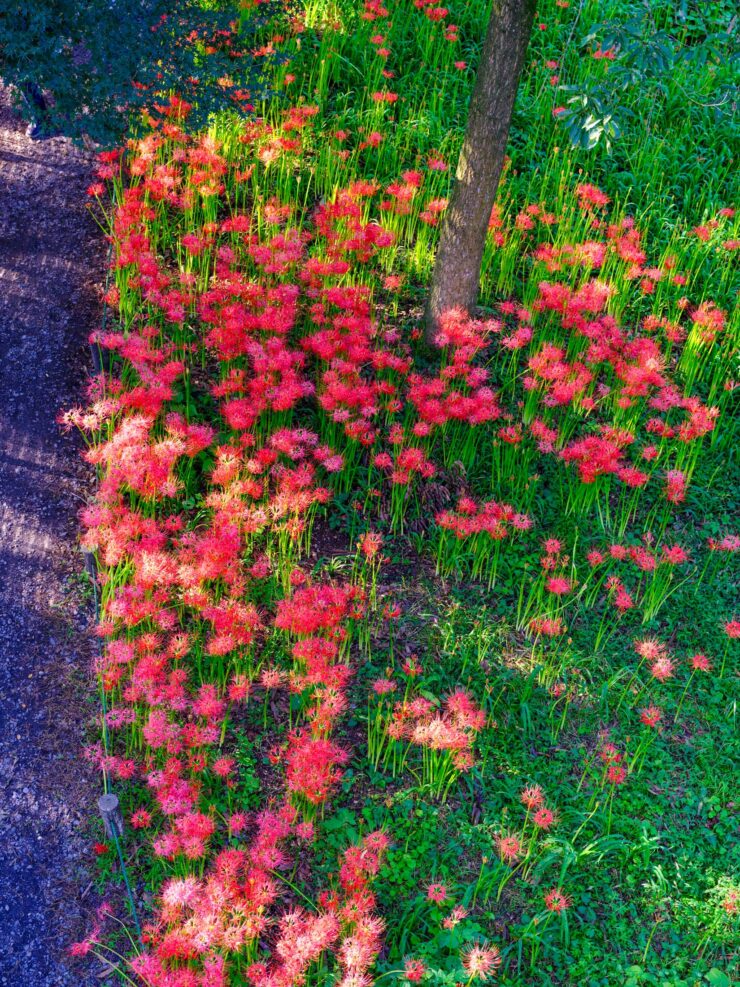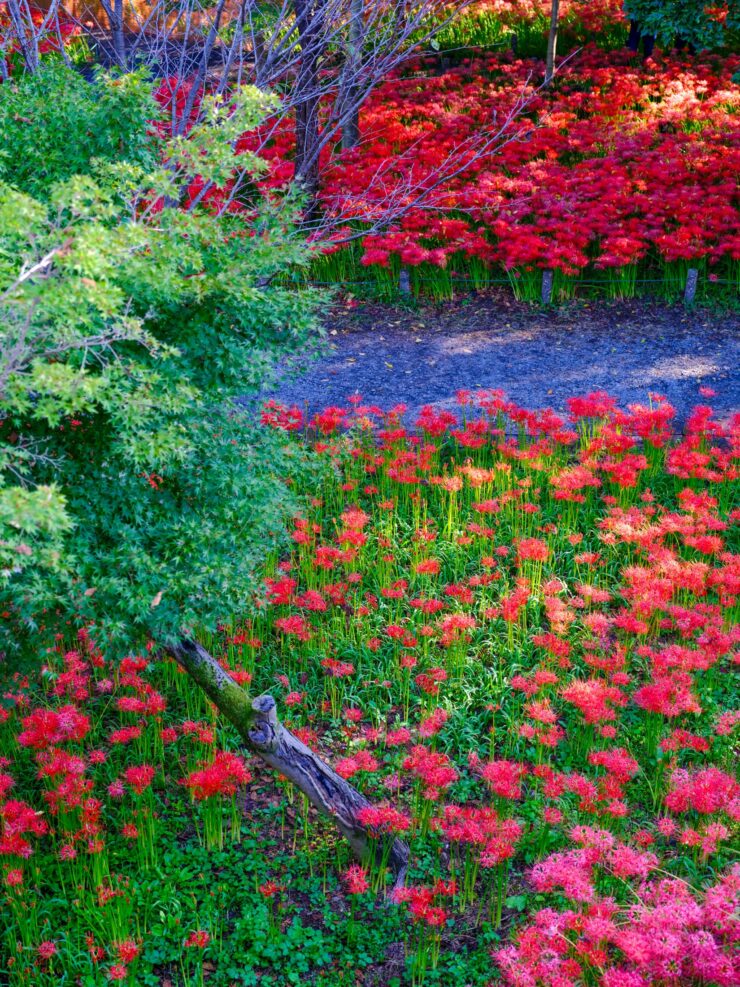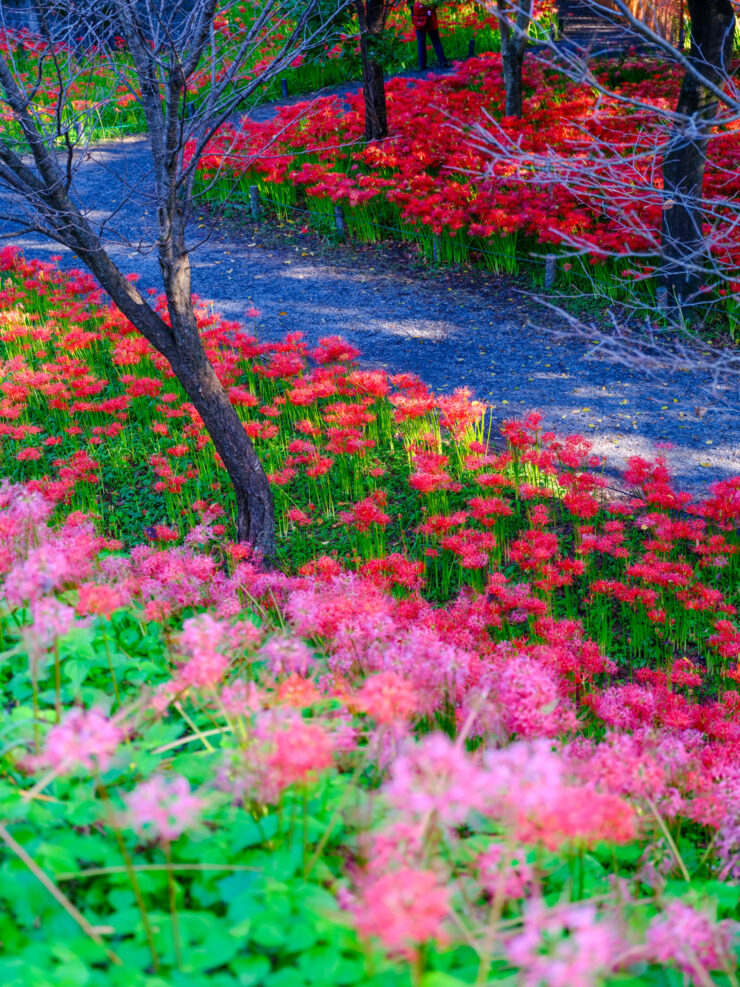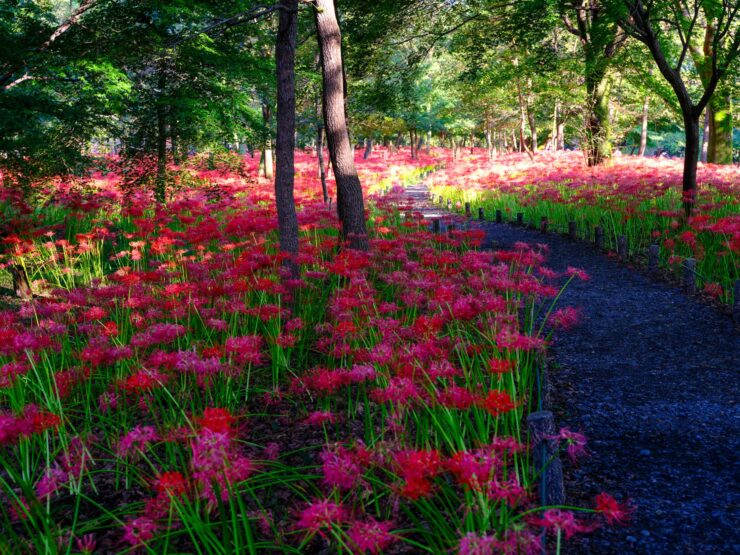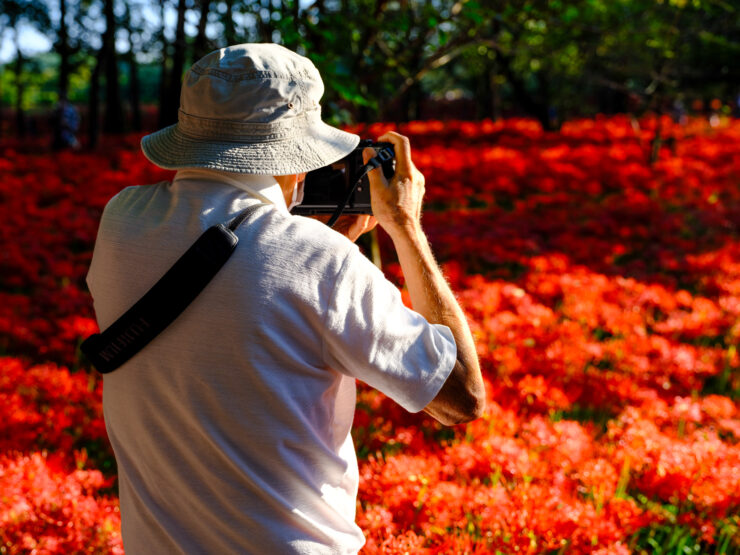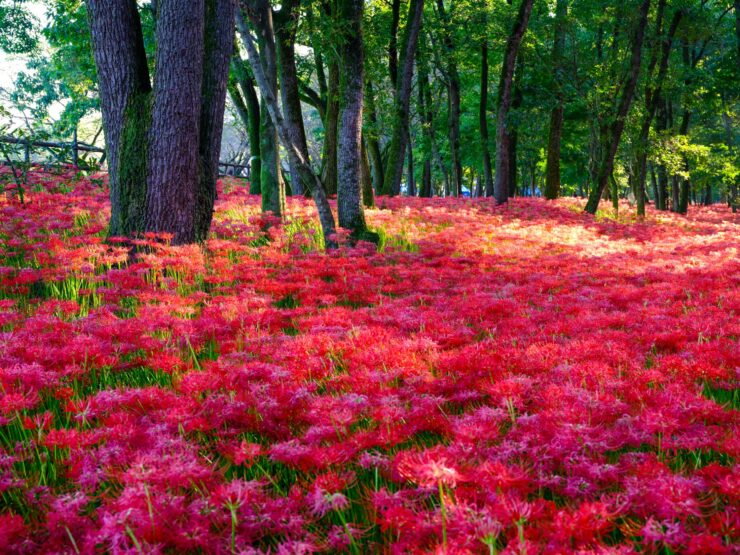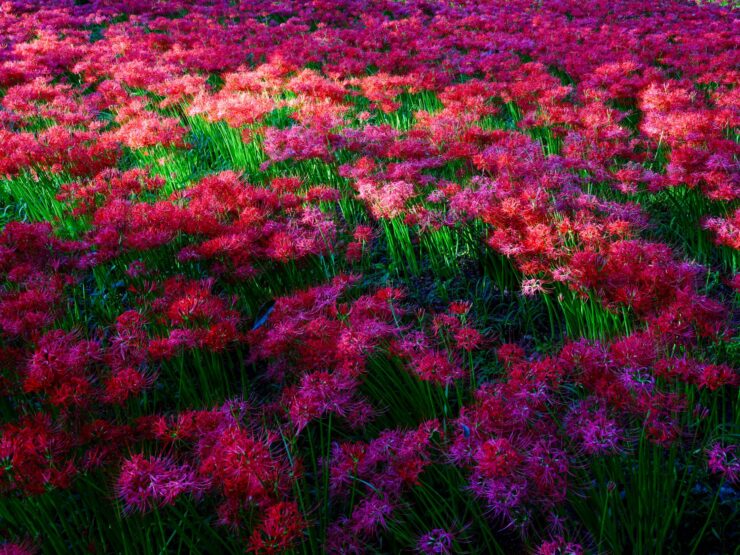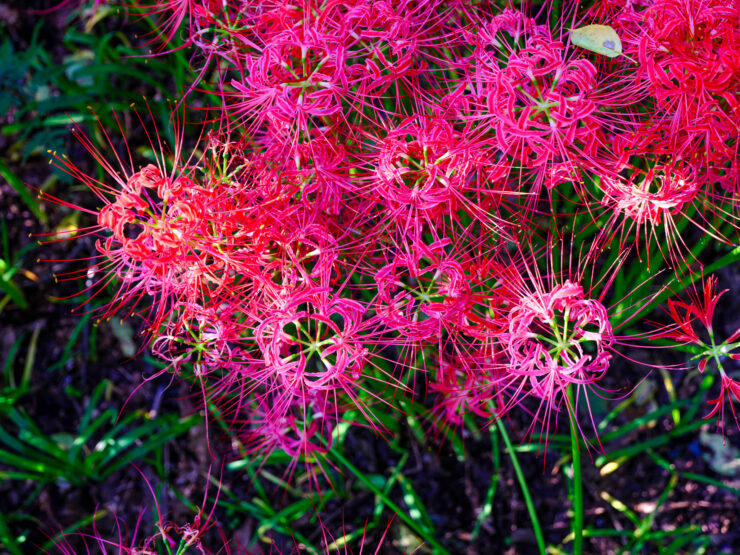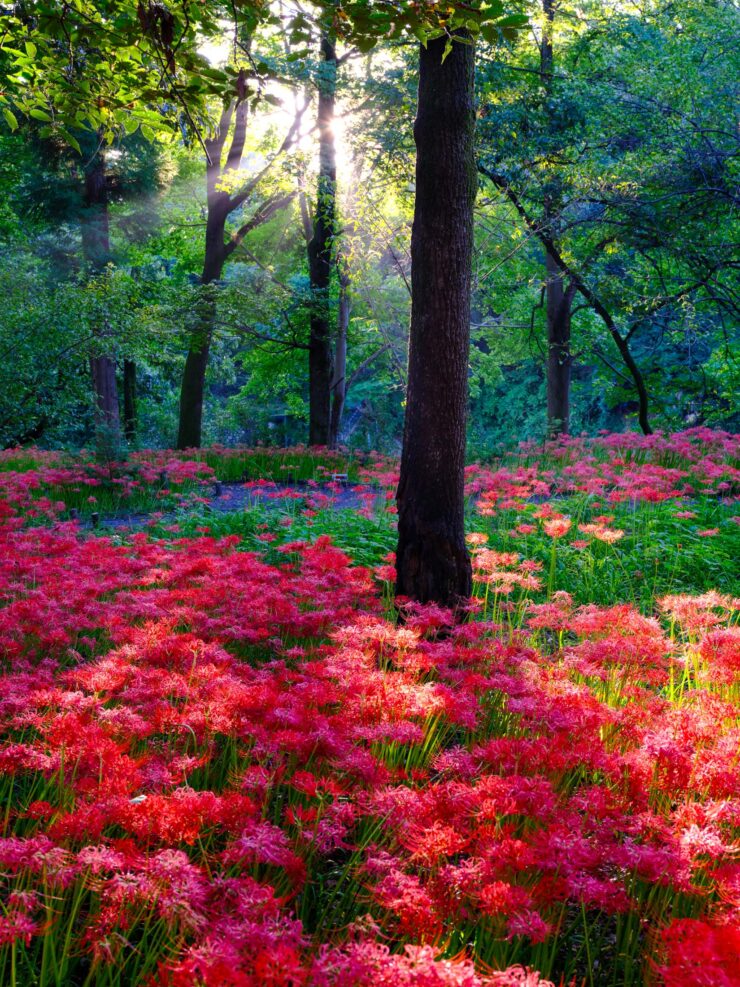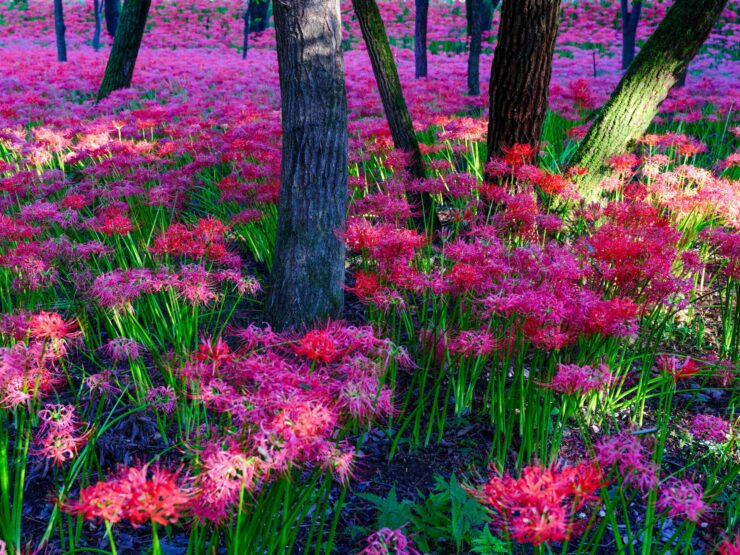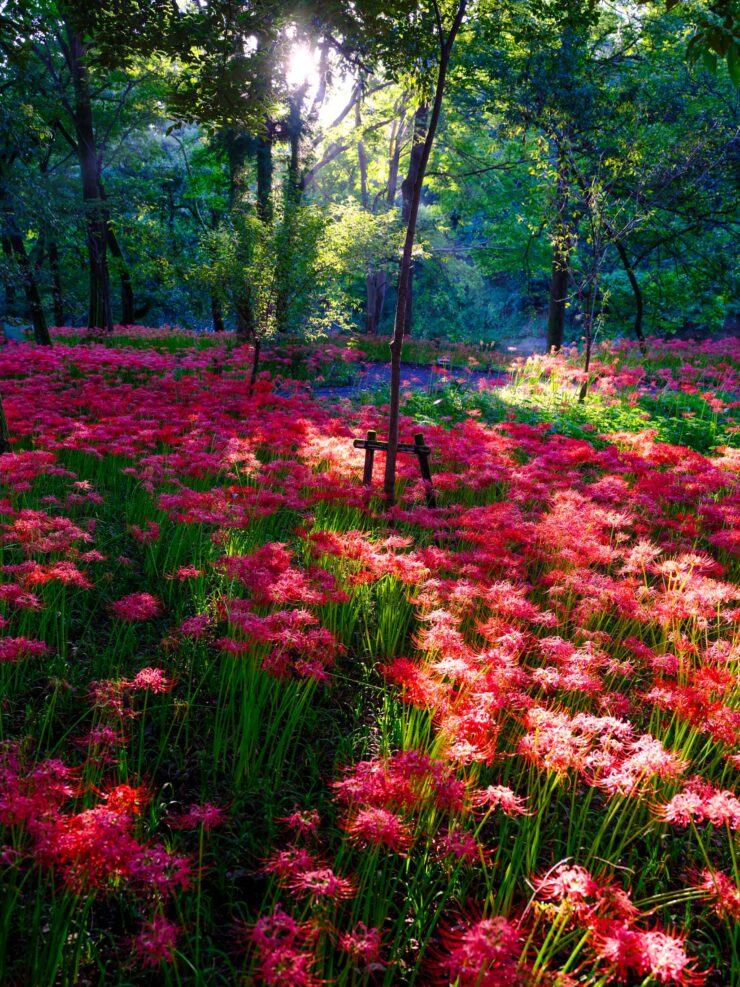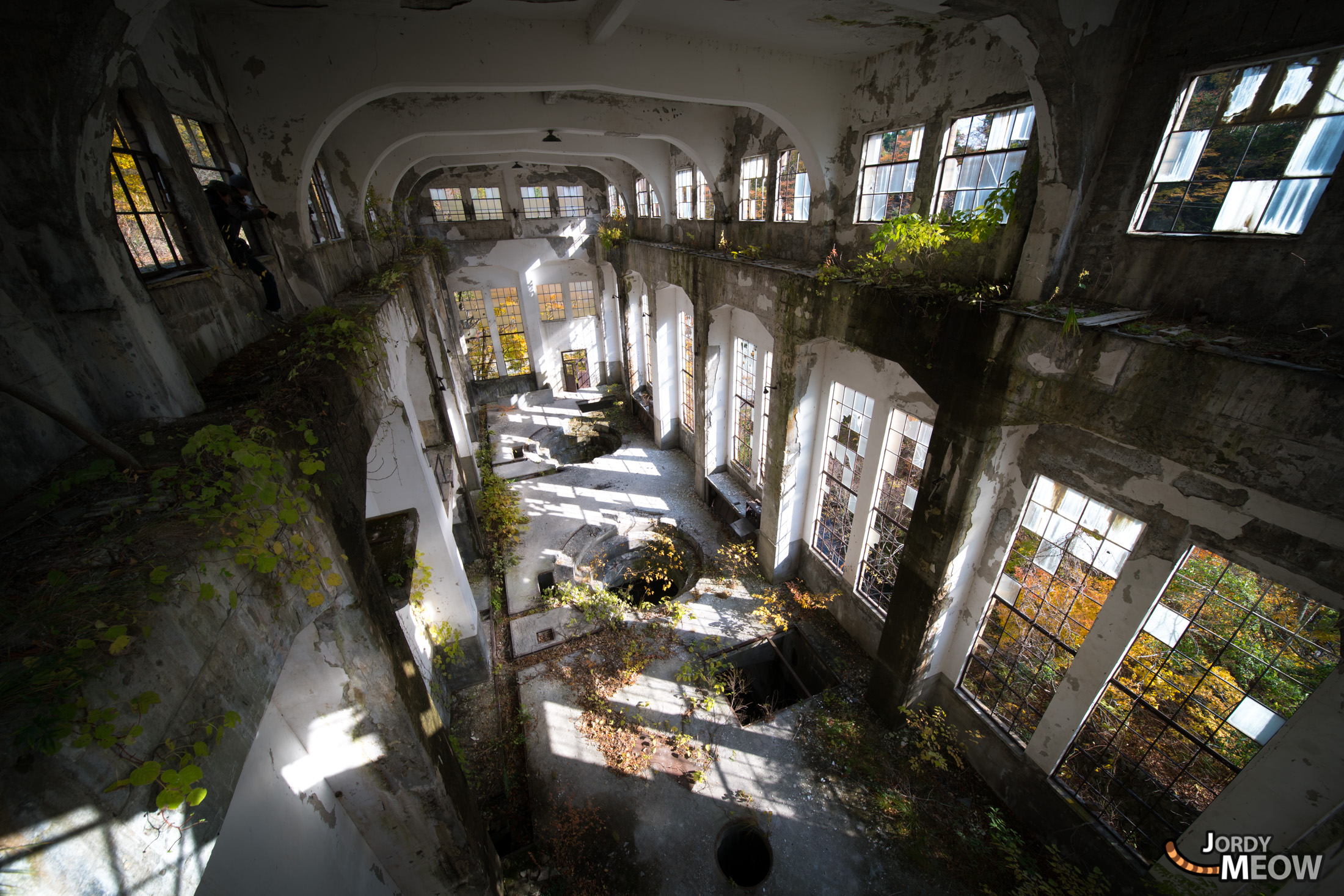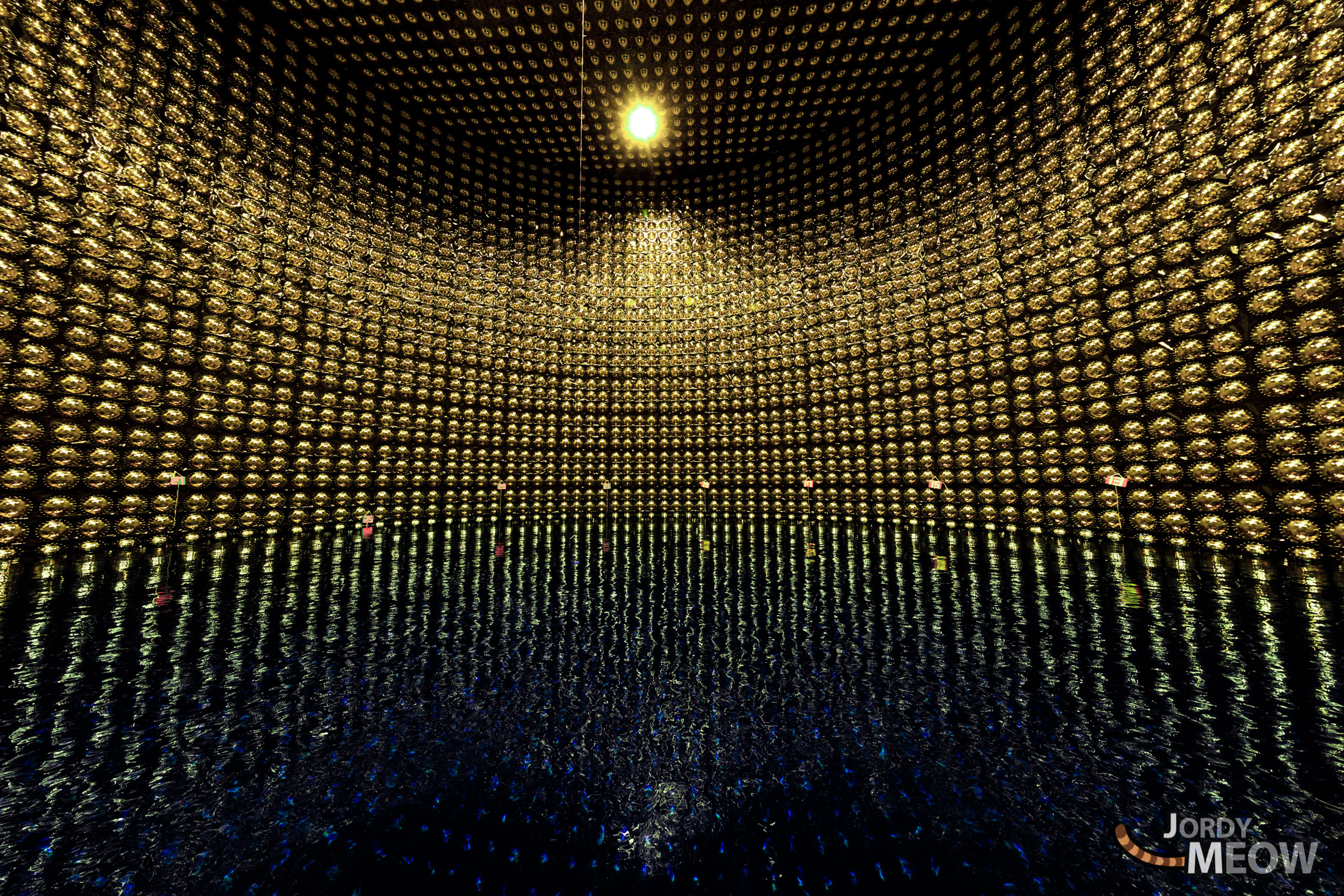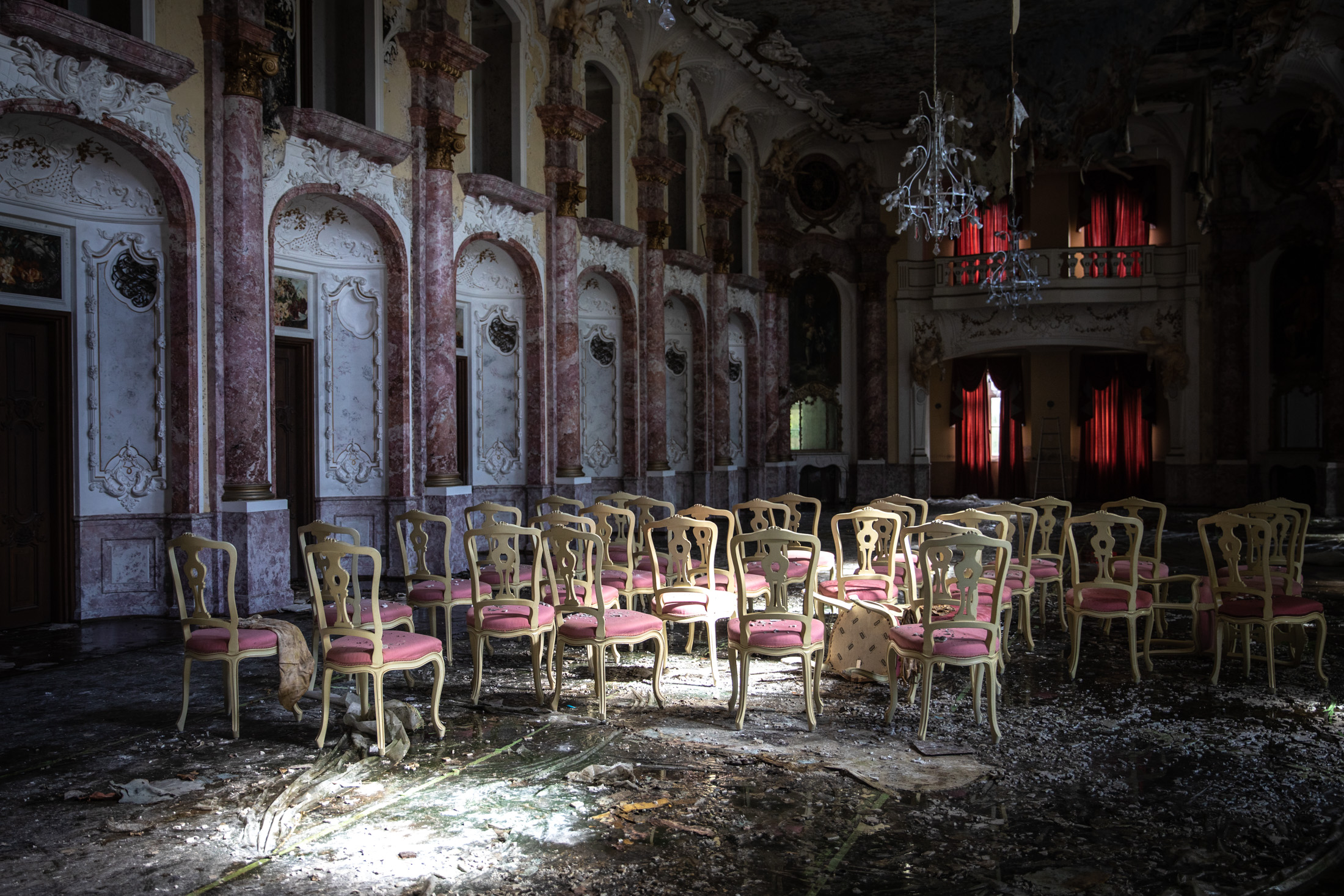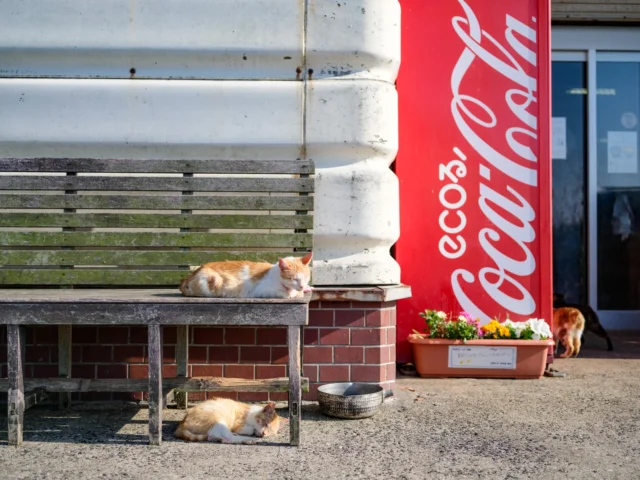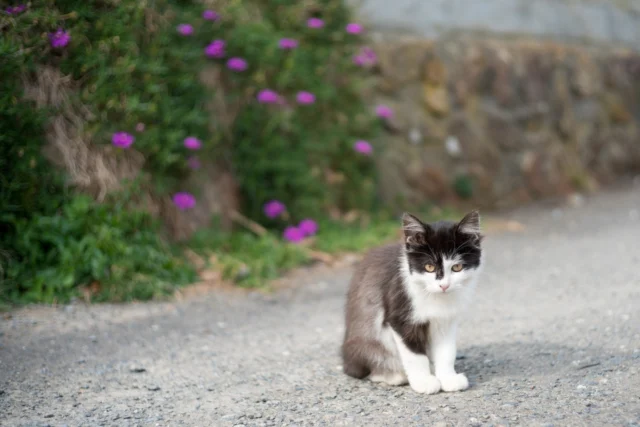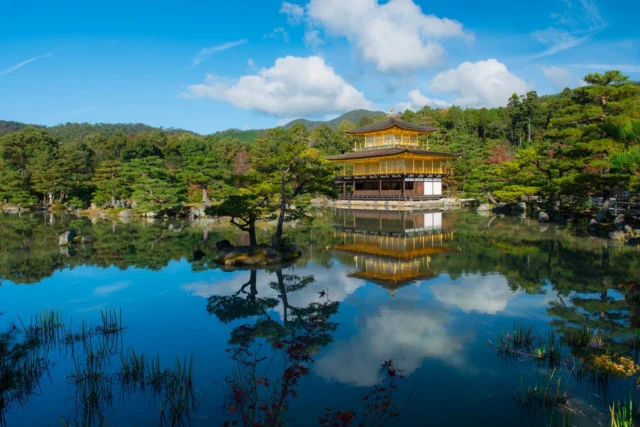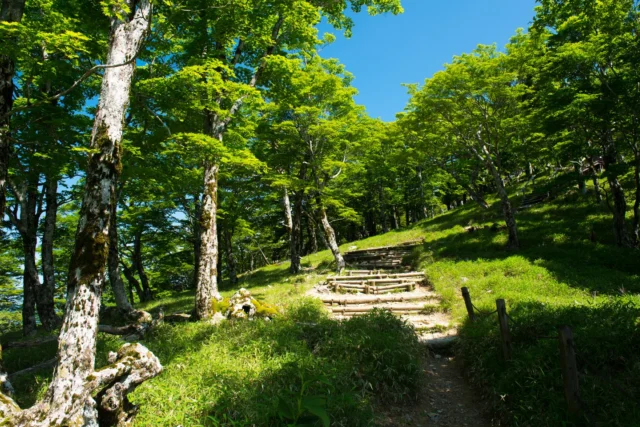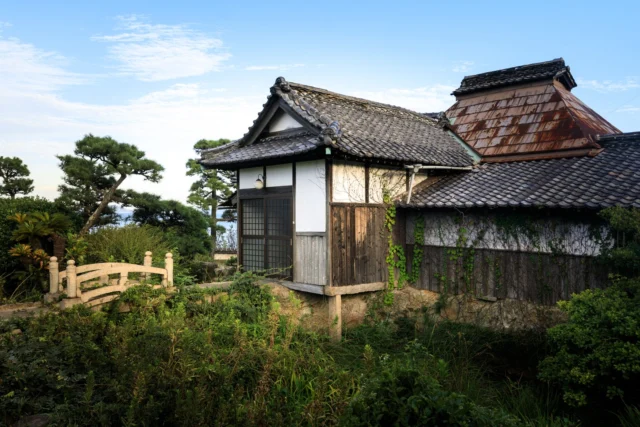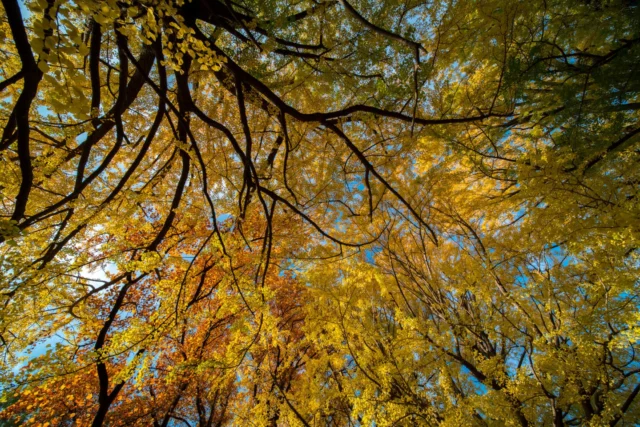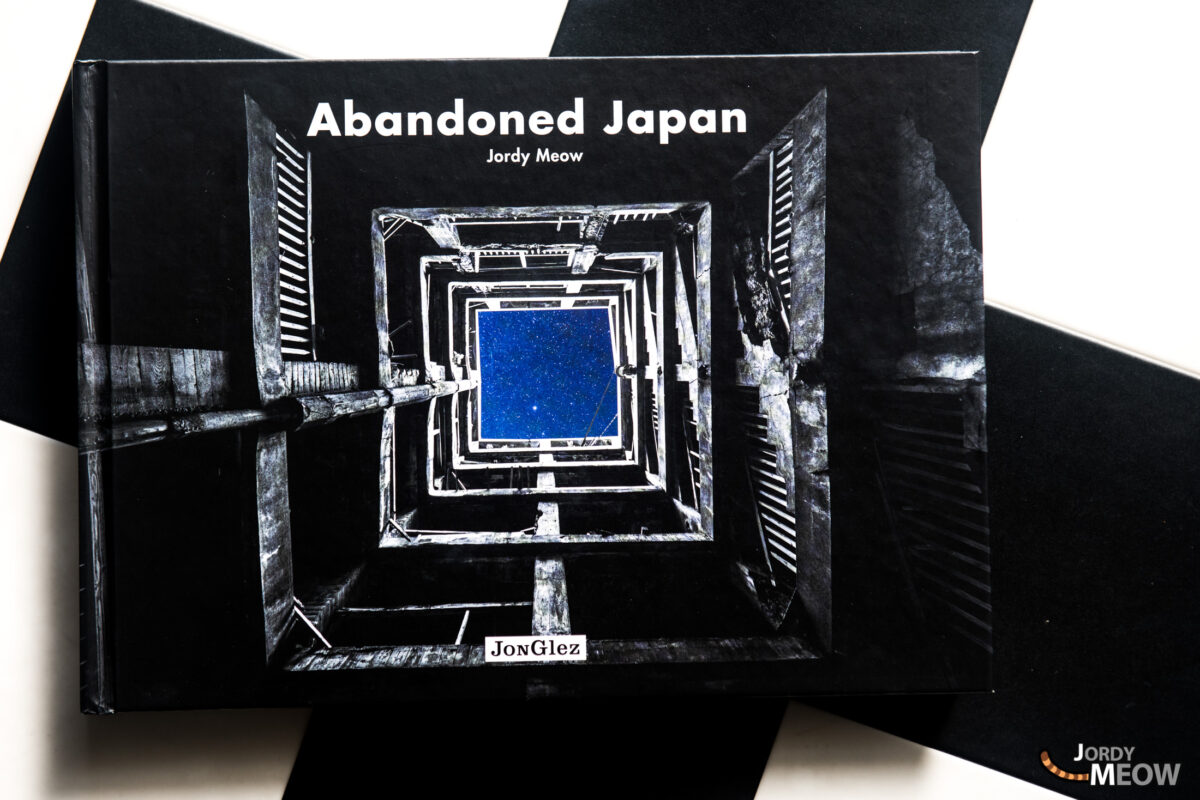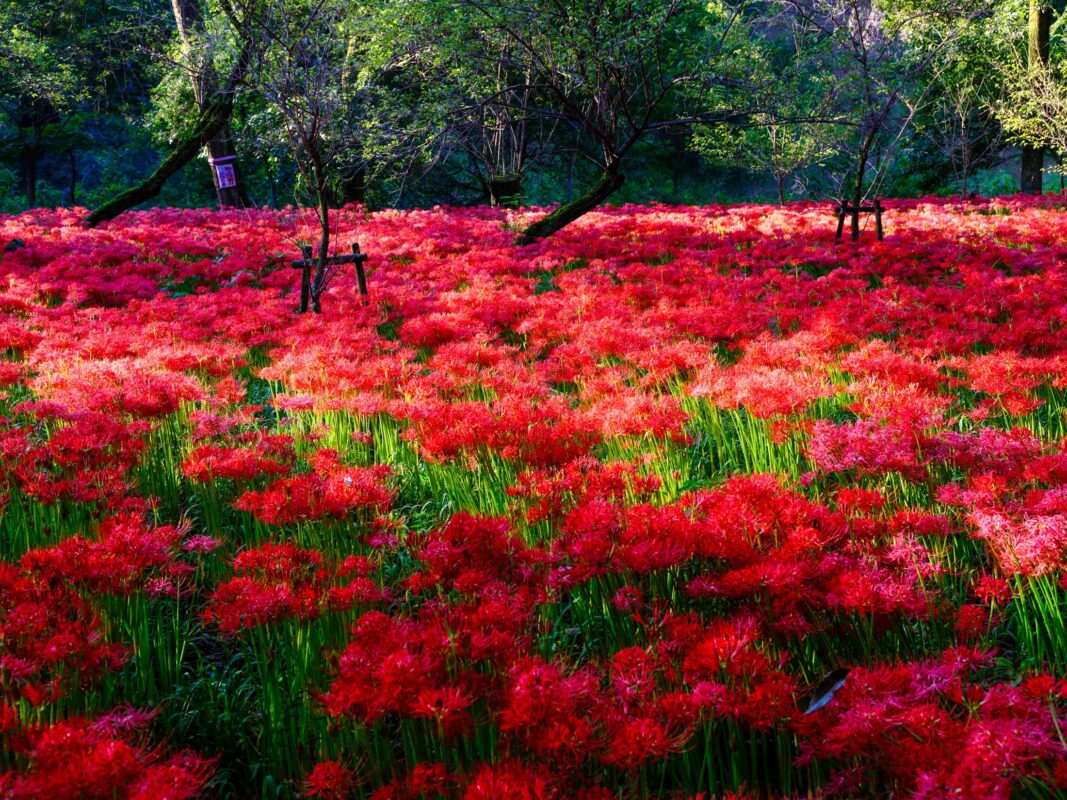
Kinchakuda Park
Kinchakuda Manjushage Park is in Saitama prefecture, close to Tokyo. Its 22 hectares are covered with fields of rapeseed flowers, cosmos and the famous red spider lilies in their scarlet robes, known locally as manjushage.
The park’s name comes from its unusual “U” shape that suggests the kinchaku: a traditional drawstring bag for carrying around loose change.
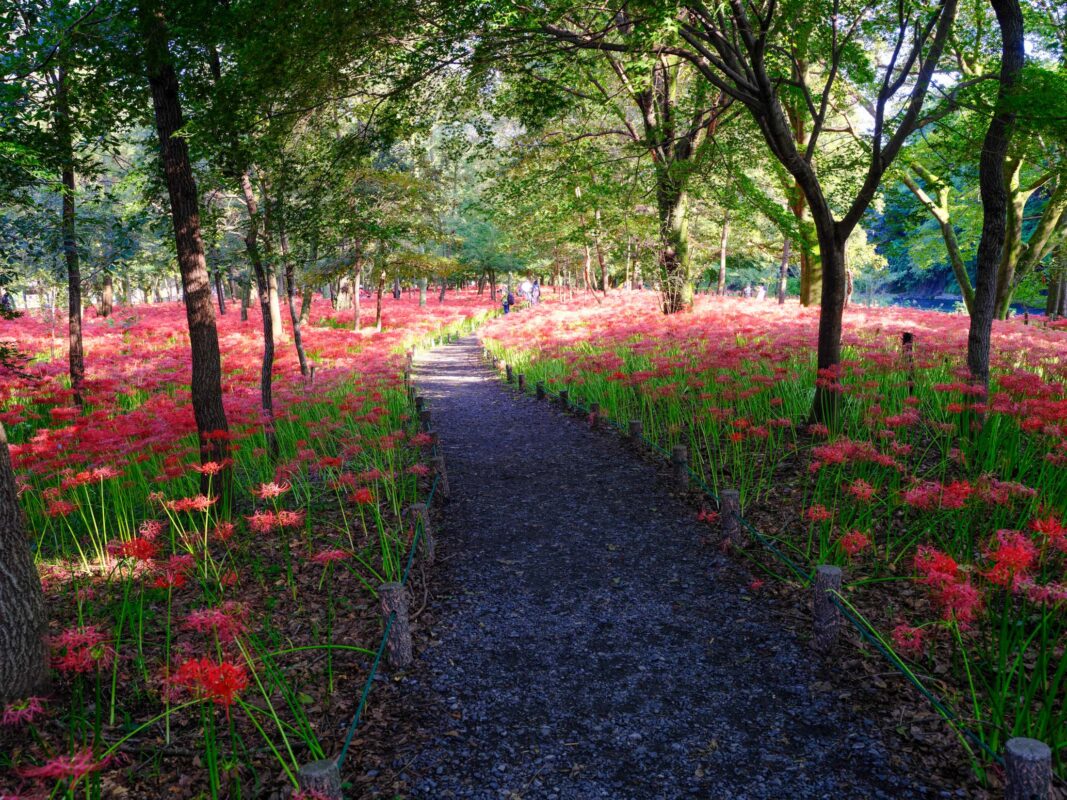
In the 700s refugees from the Korean kingdom of Goguryeo settled in the peninsula. The fertile, flat land on the banks of the Koma River was perfect for growing rice.
These crops have gradually been abandoned in modern times, but spider lilies (common name higanbana, after autumnal Buddhist holiday) began to emerge in the 1960s. The flowers are treasured by local people, and a park was opened for the benefit of the general public.

With its 5 million flowers, Kinchakuda Manjushage Park now has the largest collection of red spider lilies in Japan.
In 2017 the park even had a visit from their majesties the Japanese Emperor and Empress, who made a private trip to admire the red flowers. Such is the popularity of the place!
Red spider lilies
Red spider lilies, scientific name Lycoris radiata, bloom from mid-September to early October. Their flowering coincides with the beginning of autumn and the start of the hunt for Momiji (autumn foliage of red maple tree).
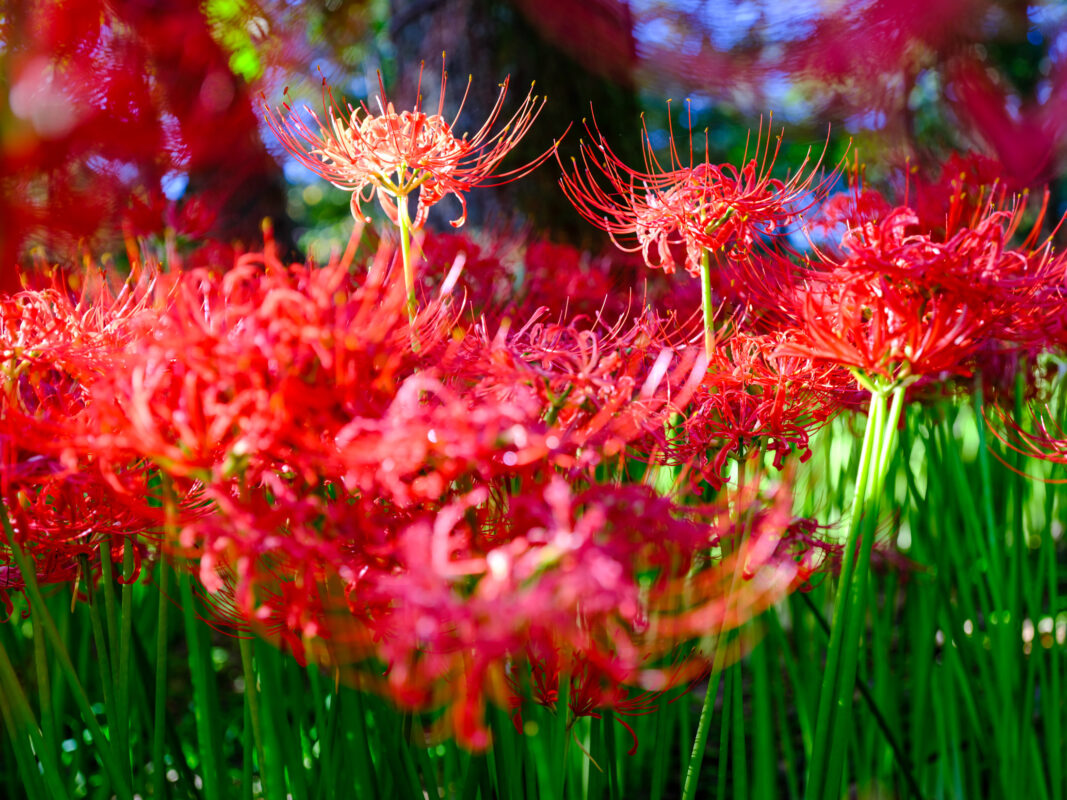
They are distinguished by their peculiar silhouette that looks like an upside-down spider. Not recommended for arachnophobes! But this is above all a toxic plant, sometimes called “death flower” because of its poisonous bulbs.
This toxicity is also partly why higanbana is closely associated with death in the cultures of Japan and other Asian countries. As a Buddhist metaphor for death, the lily is often found in cemeteries and at funerals.
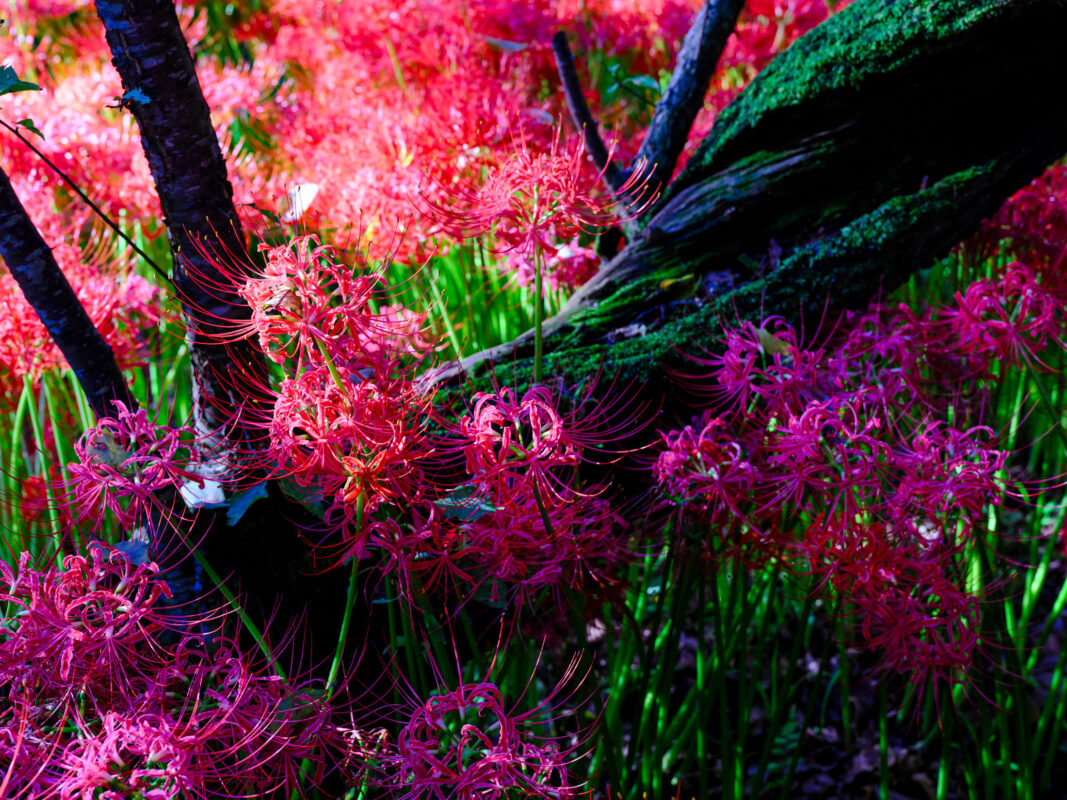
Pop culture also uses it as a metaphor. In manga and anime, the appearance of a red lily often signals the forthcoming end of a character!
Kinchakuda Red Lily Festival
In correlation with the flowering of red Lycoris, Hidaka city organizes a festival from mid to late September. After two years pause due to Covid, the festival relaunched in 2022.
Features include food stalls, local products and crafters installed among the spider lilies. There’s also the occasional traditional Japanese monkey performance: saruwamashi …
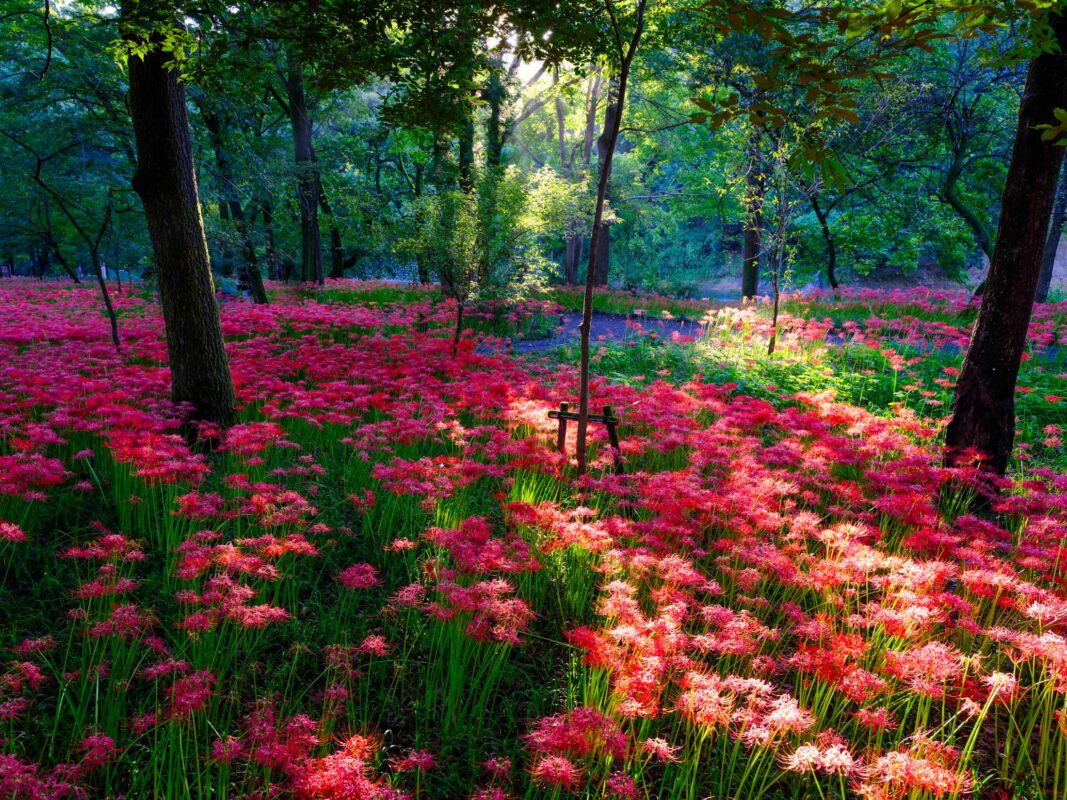
And for more awesome content about Japan, follow Jordy Meow on Instagram ! 🎵


